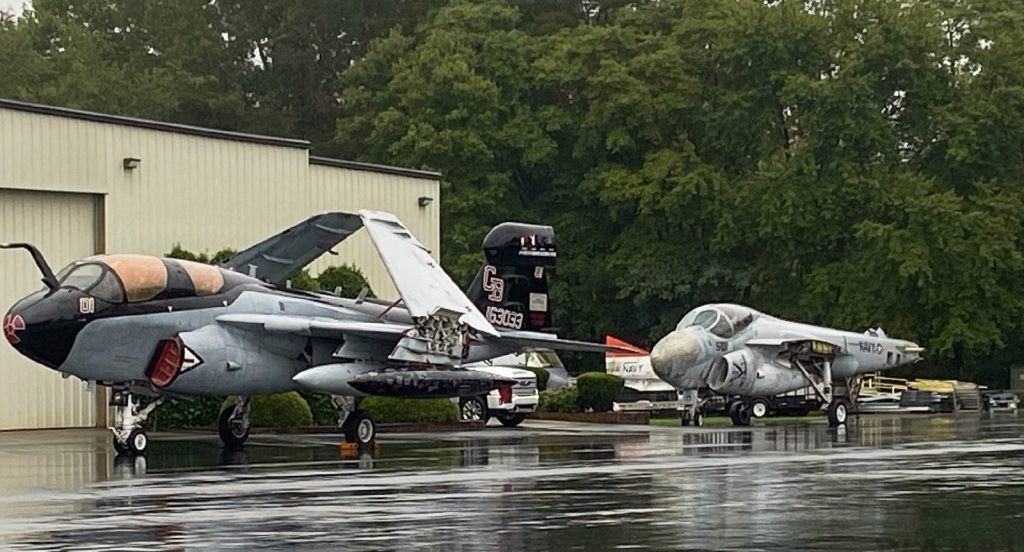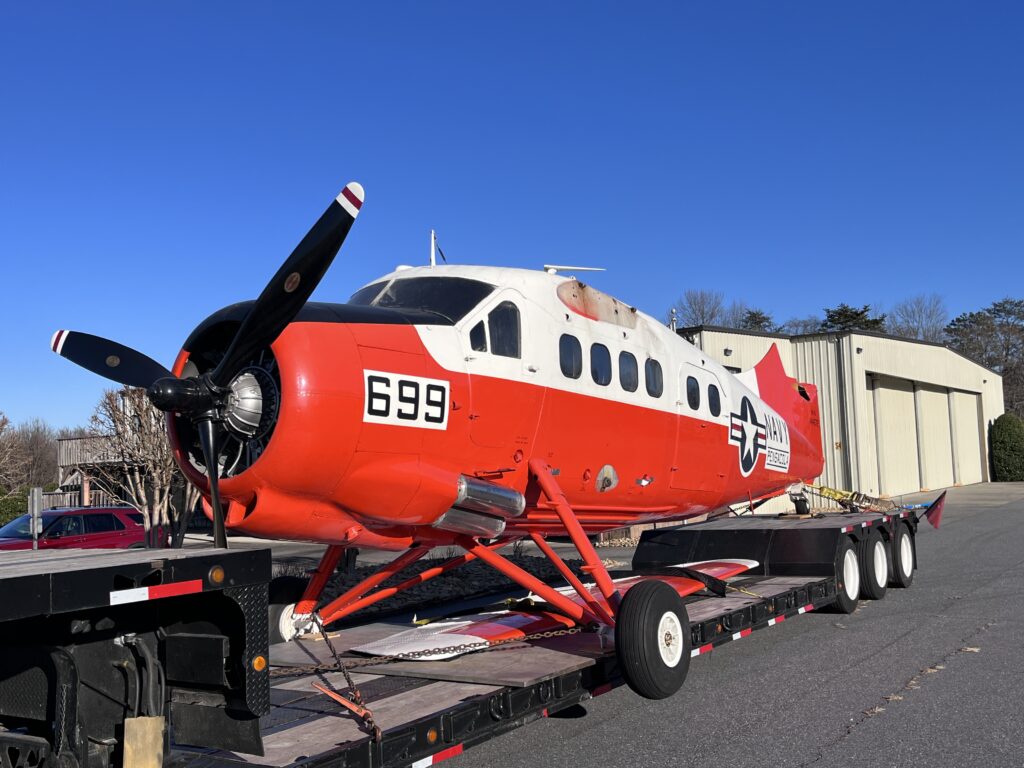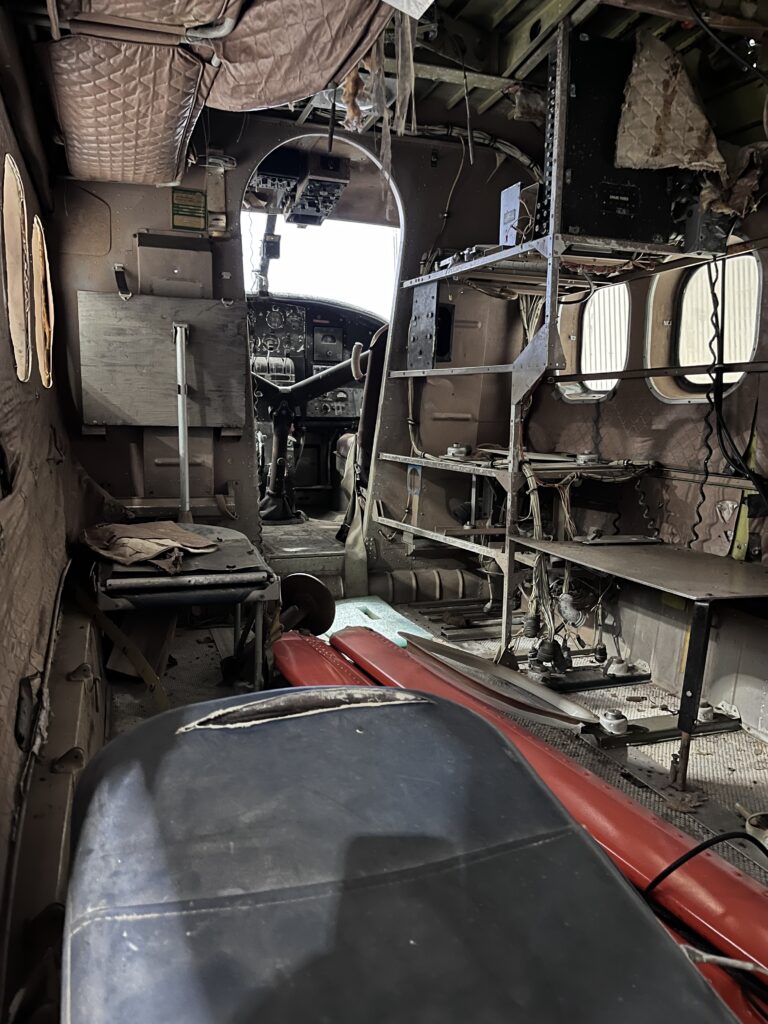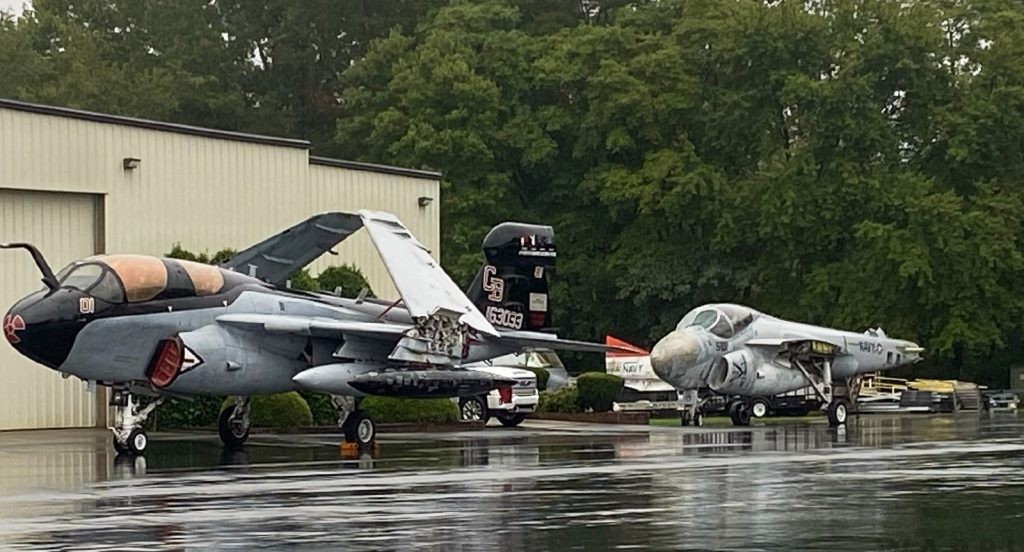The Hickory Aviation Museum at Hickory Regional Airport in Hickory, North Carolina continues its expansion by adding another aircraft to its collection of aircraft. On January 11, 2024, the museum took delivery of De Havilland DHC-3 NU-1B Otter BuNo 144672.
The Hickory Aviation Museum has had a busy three years, with the arrival of several new airframes, including OV-1D Mohawk 62-5874, FM-2 Wildcat BuNo.16278, and A-6E Intruder BuNo.155629. In 2022, their growing aviation collection of nearly two dozen aircraft received a further two historic airframes, these being McDonnell F-101B-50-MC Voodoo 56-0243 and Lockheed P-80A-1-LO 44-85235 (later TV-1 BuNo. 29689) Shooting Star. On October 23, 2022, the museum announced the addition of another rare airframe, this being a Gyrodyne YRON-1 Rotorcycle (s/n 4013) on loan from the National Naval Aviation Museum in Pensacola, Florida. The aircraft is complete with original rotor blades and is in pristine condition.

De Havilland DHC-3 NU-1B Otter BuNo 144672 was formerly displayed at the National Naval Aviation Museum in Pensacola, FL, where it was seen suspended from the ceiling in the hangar annex of the museum. The aircraft will remain disassembled and unavailable to the public until the new museum hangar in Hickory, NC is completely open. The aircraft will also be displayed suspended from the ceiling along with several other airplanes and helicopters.

The aircraft was built by De Havilland in the mid-1950s and taken on strength by the US Navy in October 1956, one of the Otter variants that would be designated NU-1B for Navy usage. With a reputation for ruggedness and the ability to use makeshift airfields, the aircraft was assigned to Air Development Squadron Six (VXE-6) to be used for support in Antarctica.
In November 1956, the aircraft was packed in crates along with two other Otters, loaded onboard the attack transport ship Wyandot (AKA-92) at NAS Quonset Point Rhode Island, for the two-month journey to Antarctica. Once offloaded, the ground crews of VXE-6 set about reassembly and flying ops commenced until the winter season hit hard.
When flying weather returned the crews arrived to prepare the aircraft, only to find all three Otter severely damaged by the wind and snowdrift. One was a total loss, and 144672 had a damaged wing that was removed from one of the other Otters and made flyable again. The aircraft flew as advertised with flights as long as 10 hours supporting Operation Deep Freeze II and III and remained with VXE-6 until 1965.
With duties complete, 144672 returned to the US and was assigned over the next 10 years to Test Pilot Training School (NTPTS)/Naval Air Test Center (NATC) Pax River MD, Naval Air Test Facility Lakehurst NJ, and Pacific Missile Range Pt. Mugu CA. In 1975, it was flown to Pensacola FL, stricken off charge, and retired.

In 2004 after being damaged from Hurricane Ivan, the professionals at NAS Pensacola repaired and restored this historic aircraft, completing the work in 2007. It is a welcome addition to Hickory Aviation Museum’s impressive aircraft collection.
On October 26, leaders from the City of Hickory, Hickory Aviation Museum, and Catawba Valley Community College gathered at Hickory Regional Airport to officially break ground on the construction of a new facility, where aviation and education will come together. The City of Hickory is partnering with the Sabre Society of North Carolina/Hickory Aviation Museum and Catawba Valley Community College (CVCC) to construct a building to house the museum’s vintage military aircraft, preserve aviation history, and provide STEM education and workforce development opportunities.
Visit www.elevatehky.com for more information about this project and how to support the Hickory Aviation Museum by making a tax-deductible contribution.
